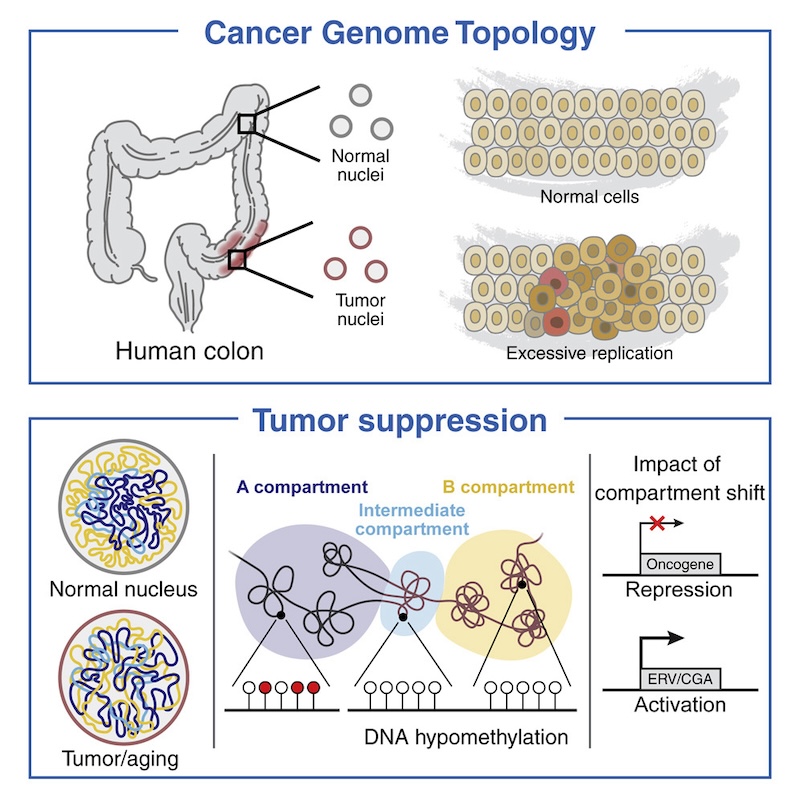Nuclear organization
Example work: In a collaboration with Bradley Bernstein’s lab we set out to understand the role of chromatin reorganization in colon cancer. We integrated genome topology data (Hi-C, HiChIP), imaging (FISH, EM) with chromatin and gene expression profiling data to characterize changes at scales ranging from individual chromatin loops to topologically associating domains (TADs) to compartment level organization. The most striking changes were at the coarsest scale involving packaging of the transcriptionally repressed “B” compartment that comprises approximately 50% of the genome. We showed that the same changes, which appear to be linked to a progressive loss of DNA methylation in this physical compartment, can be reproduced by aging cells through many mitotic divisions in vitro. The most surprising finding in this work is that the associated gene expression changes appear to be tumor suppressive. An intriguing possibility is that excessive cellular mitotic cycles lead to a progressive remodeling of chromatin that suppresses further growth in a tumor-suppressive manner, analogous to telomere shortening. Certain cells may acquire mechanisms, such as driver genetic mutations, that enable them to continue replicating despite this ‘tumor brake’, and thus become cancerous despite these characteristic nuclear changes, rather than because of them.
